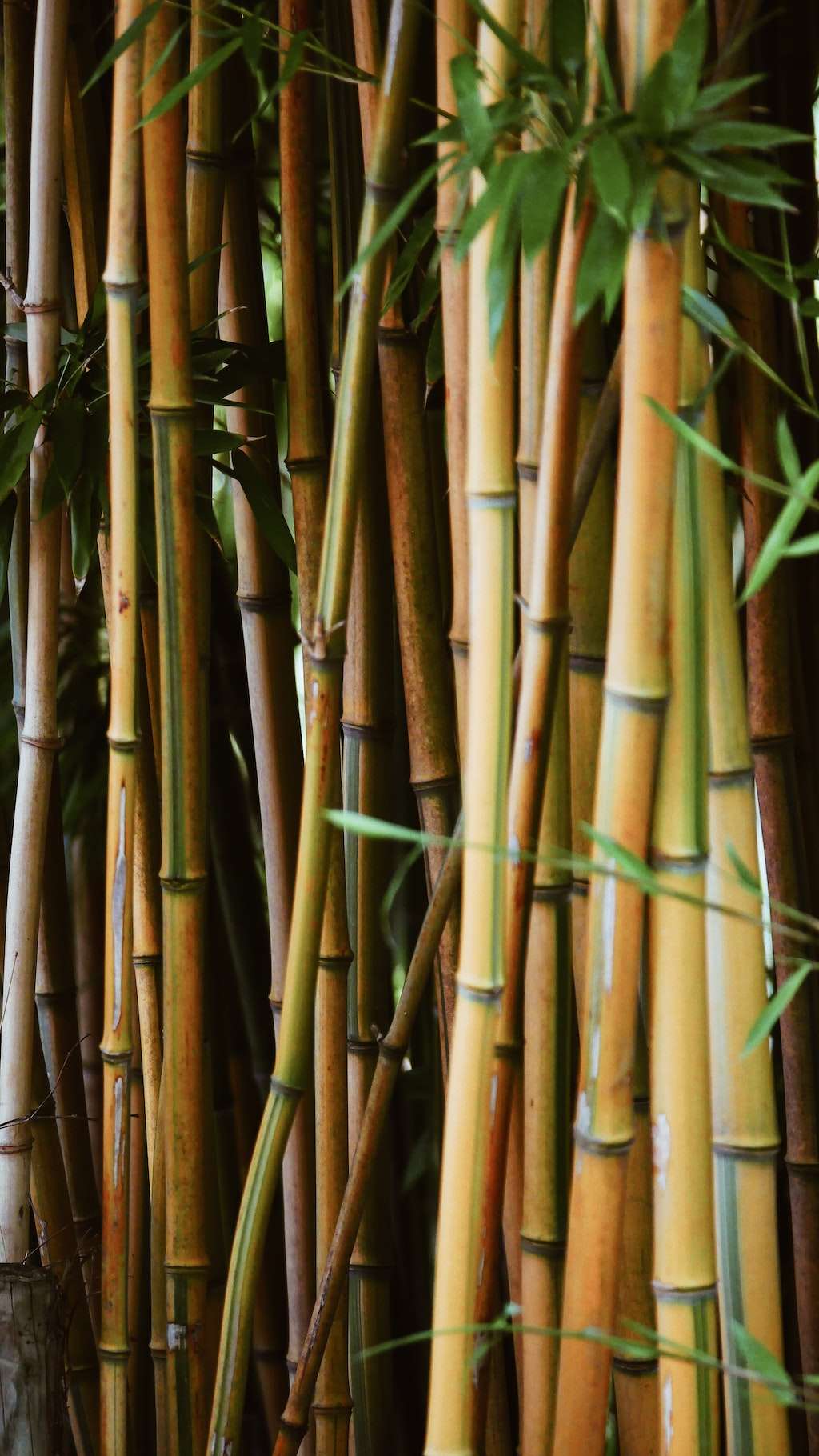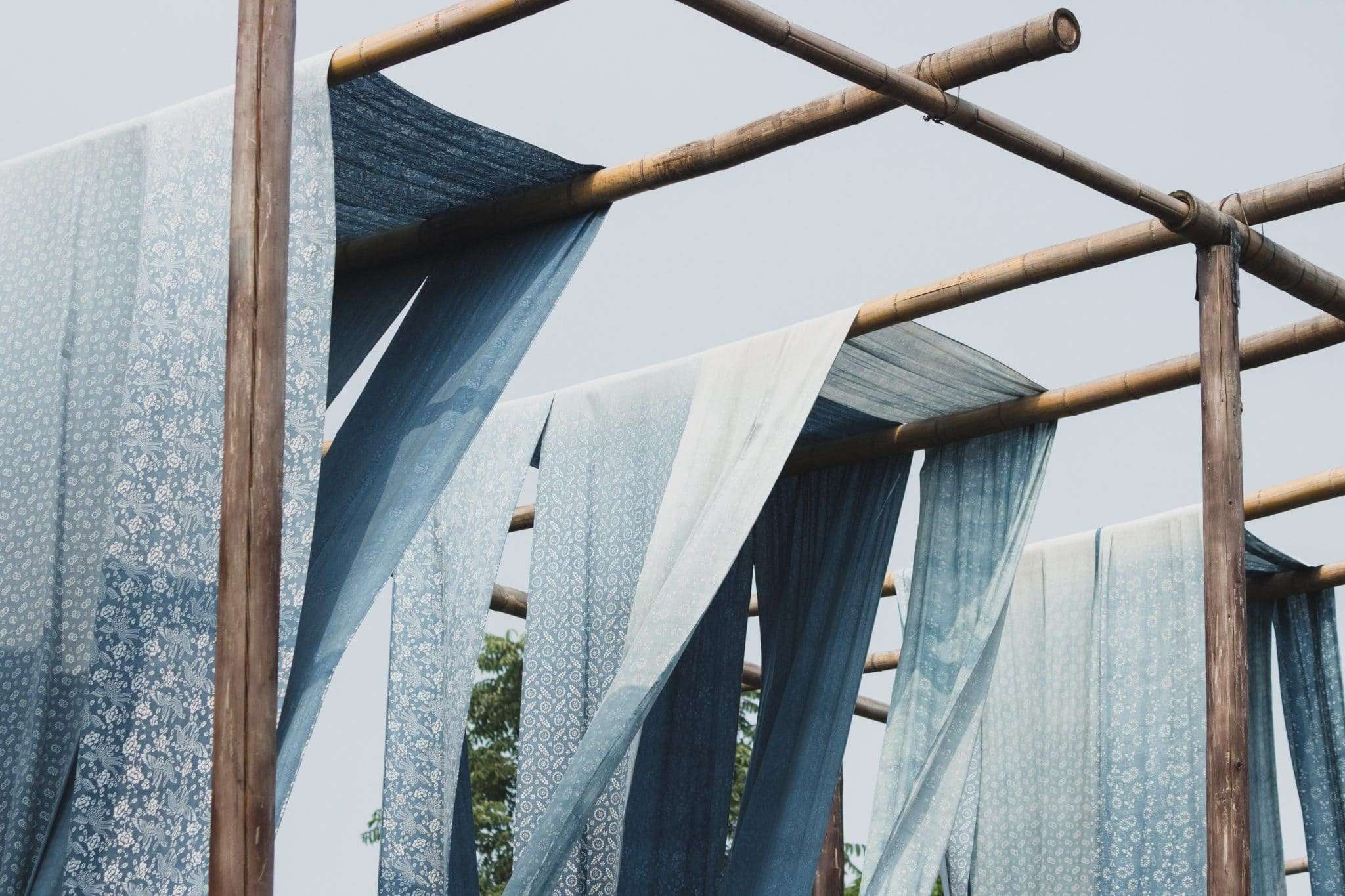When you think of bamboo, two things likely come to mind: pandas and sustainable fabric. But while the former is forever adorable, the latter is far from perfect. Is bamboo eco-friendly?
People first started trying to make clothing out of bamboo in the 1800s, but it wasn’t until the last decade or so that it really started to hit the mainstream. Now, you can easily find bamboo-based knits, socks, underwear, and more. But, like any fast-growing industry, the fabric has its drawbacks.
While it’s often considered “eco,” the truth is, it’s not that straightforward. There are a few things to consider when it comes to the sustainability of bamboo fabric, like how it’s processed and where (and how) it’s grown. Here, we take a closer look at why.
Where does bamboo fabric come from?
To state the obvious, bamboo fabric comes from the bamboo plant. It grows all over the world, but the biggest market is Asia Pacific, which has nearly 80 percent of the industry’s revenue share.
China is the world’s biggest bamboo cultivator, which is unsurprising when you consider the plant’s rich and long history in the country. (Its usage for things like weaponry and housing traces all the way back to the 11th century.)

Bamboo is inherently a sustainable plant; when you chop it down, it grows back rapidly, which means it’s a renewable resource. It also sequesters carbon. Research suggests that one hectare of bamboo can absorb as much as 12 tons of carbon dioxide per year. The plant can also produce even more oxygen (more than 35 percent) than trees.
Important note: Industrial bamboo is different from the type pandas eat, so you can be safe in the knowledge you’re not taking away their food source when you buy bamboo products.
Issues with the bamboo fabric industry
However, there are issues with bamboo cultivation. As the industry booms, more land is needed to grow it, which means deforestation and the creation of monoculture forests. This is when one species of tree (in this case, bamboo) is planted en masse, which puts pressure on the soil and biodiversity. It’s the key problem with palm oil plantations, for example.

Paula Chin, WWF-UK’s materials specialist, told Good Housekeeping last year: “Bamboo is a very attractive renewable source for materials because it grows at much faster rates than trees. However, areas growing bamboo do not promote as much biodiversity as forests, especially in areas where land has been specifically cleared to grow it.”
According to Bambu Batu, a platform dedicated to educating the world about bamboo, one key way to prevent the bamboo industry from going down the same road as palm oil (plantations of which drive deforestation and cover more than 27 million hectares around the world) is to manage it effectively and to mix the plant with other species (like cacao trees, for example).
The platform notes that while this practice is more common on bamboo plantations in Southeast Asia (Indonesia, for example, is the third-largest bamboo producer in the world), it is less common in China.
How bamboo fabric is made
Growing and harvesting bamboo correctly is just one piece of the problem when it comes to bamboo fabric, however. Much of the bamboo materials on the market are made with bamboo rayon, also known as viscose, which is semi-synthetic. This version of the material can only be produced using toxic chemicals.
Carbon disulfide and sodium hydroxide are used to transform bamboo stalks into cellulose strands, which are then used to create bamboo fabric. Carbon disulfide is a pollutant that can cause symptoms like dizziness and vision problems in workers, while sodium hydroxide is also a corrosive, environmental hazard that can cause severe burns.

If harsh chemicals aren’t properly managed (and there is evidence to suggest they aren’t on many occasions), they can pollute waterways, harm ecosystems, and even damage the health of surrounding communities. Instead, these chemicals should be captured and re-used, to create a closed-loop method of production.
Dirty Fashion, a microsite and initiative of the Changing Markets Foundation, has set out a 2023/2025 roadmap for viscose producers. It encourages and supports fashion brands to help their suppliers manage chemicals responsibly, protect workers, comply with local environmental laws, and embrace a closed-loop approach to production.
Is it possible to buy sustainable bamboo fabric?
Because of the way bamboo is processed, leading textile certifications, like the Global Organic Textile Standard, will not offer garments made with the material its approval. This makes it difficult to know whether the fabric you’re buying has been grown and processed responsibly.
But the industry is not without hope. So far, a few brands have stepped up to Dirty Fashion’s roadmap. Reformation, for example, is listed as a frontrunner by the initiative in a table that determines how quickly and efficiently brands are moving to responsible viscose. H&M, New Look, and C&A are also listed as frontrunners.

Brands like Prada, Versace, and Walmart, however, are listed in the “red zone,” which means they have not engaged with the roadmap yet or disclosed their practices. Some are changing the way the fabric is produced. Monocel is one example of how the fabric can be improved. It isn’t in widespread use yet, but the bamboo yarn is made in a very similar way to Tencel, using a closed-loop process.
And while there is work to be done, it’s worth noting that bamboo is still a better choice than plastic-based polyester, for example. Unlike the latter, which can sit in landfills for centuries, it does actually biodegrade. If produced in an environmentally responsible way, bamboo does have a lot of potential in terms of sustainability. But in terms of industry improvements, it’s just a case of watch and see.
Related on Ethos:


